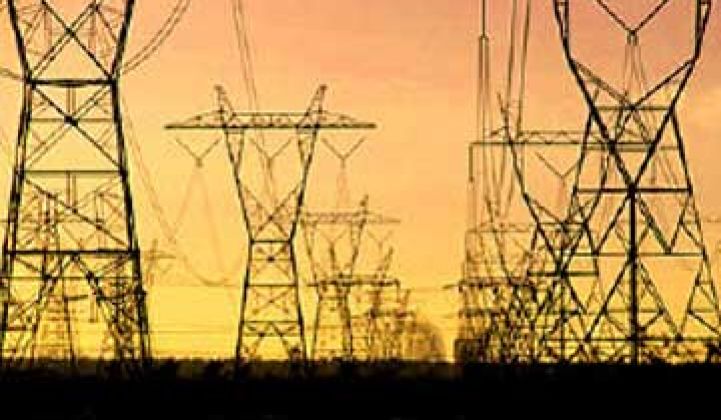The regional grid operator PJM may soon change its capacity market to prevent disruptions to the energy system like those experienced during the polar vortex this January.
At a meeting of the Markets and Reliability Committee in late July, CEO Terry Boston described the “need to refine the definition of capacity” by incorporating fuel security, strengthening incentives and penalties for performance, and cracking down on what PJM saw as “poor performance” during the winter storm.
During that weather event, temperatures across the PJM region dropped to -15 degrees Fahrenheit. As shivering customers reached for their thermostats, demand for natural gas shot up, as did demand for electricity. That caused major supply-side constraints which nearly led to a crisis.
Gas-fired power generators, lacking firm delivery contracts with gas suppliers, backed off their plants as gas prices skyrocketed. The price of electricity briefly shot up to $9,000 per megawatt-hour, and operating margins tightened.
The cold weather also caused problems for power plant operations. Not only was natural gas less available and more expensive, but coal-plant operators discovered their coal piles were frozen. Gas igniters failed, pipes froze and seals cracked. Backup oil plants were unavailable, as trucks couldn’t make fuel deliveries.
As of 7 p.m. on January 7, 40,200 megawatts of generation capacity were offline -- 22 percent of PJM’s total and three times the normal level. Almost half of that was gas-fired power, while another third was coal. PJM is America’s largest grid operator, serving 61 million customers with a peak demand of 165,000 megawatts.
In all, 36 percent of the total gas fleet in PJM was knocked out, almost half due to interruptions in fuel supply. The coal fleet in PJM also fared poorly, with 17 percent of plants missing in action.
Wind power, driven by the strong storm front, had a good day. PJM got up to 4,000 megawatts of wind, with a total capacity factor of 50 percent on January 6. “The wind power produced had a positive impact on supply and contributed to PJM’s ability to maintain reliability,” PJM reported afterward.
Nuclear also did well, according to the Nuclear Energy Institute. Only three nuclear plants were offline nationwide, resulting in an average capacity factor of 95 percent.
Concern about seasonal conflicts between natural gas for heating and for power generation has been high on the agenda of federal regulators for some time. The Federal Energy Regulatory Commission is working to improve coordination between gas and electricity markets and otherwise increase grid reliability, especially during weather extremes.
New England is more exposed than PJM to gas supply issues. Thanks to ambitious clean energy policies and economic drivers, New England is on the brink of being coal-free, with only 6 percent of the power used this year coming from coal, according to the New England Independent System Operator.
But with difficulties in siting new wind farms, antagonistic policies toward biopower and a still-small solar presence, New England now gets 41 percent of its power from natural gas. With another one-third of its power coming from an aging nuclear fleet, the region can expect even more gas-fired power in the future.
In a “problem statement” paper released at the meeting, PJM staff observed that “the current set of performance incentives and penalties for Capacity Resources does not sufficiently address all that is required to ensure that operational reliability will be maintained through all seasons.”
They specifically cite conflicts between electricity and gas market rules that create scheduling problems, as well as limits to demand-side resources.
Many demand response contracts are only available during emergency conditions, and then only in the summer. In the most recent RPM auction, they note, only 14 percent of the winning DR bids were available year-round.
“With a greater shift toward gas-fired resources, there is no incentive for generators to sign up for Firm Transportation and expand available pipeline capacity,” they wrote. “Unless PJM changes the performance incentives and penalties for non-performance…gas-fired forced outages are sure to increase during the winter peak period.”
PJM staff are working on a second white paper with proposed solutions, which will be circulated for stakeholder comments. The operator is working at lightning speed, planning to issue new market rules by November, just in time for winter.
While concrete details are yet to emerge, the PJM staff has recommended that “the requirements for capacity resources should be refined and the incentives and penalties related to performance should be strengthened.”
The move was immediately criticized by some observers.
“They are moving a key subsidy toward coal plants in a manner that would effectively neutralize the effect of the EPA plan,” said Tom Matzzie, founder and CEO of Ethical Electric, a green power marketer active in six states and Washington, D.C.
“This is a lifeline to old coal plants in my view,” said Matzzie. “Their capacity market has largely failed and should just be eliminated. It is just a giant multi-billion-dollar subsidy to coal.”
Others are not so sure. “It all depends on how ‘capacity’ is defined,” said Bill Dugan, a consultant for Customized Energy Solutions.
A key factor will be if a generator has control of their fuel supply, and whether a gas plant has a firm fuel transportation contract. “PJM might see that as just as good as coal and nuclear, but maybe not,” said Dugan.
John Moore of the Sustainable FERC Project sees some potential opportunities.
“We’d like to see more winter demand response market improvements (much cheaper than building more capacity); more energy efficiency in the capacity market; better interregional power-sharing (no grid should be an island); and a winter capacity factor for wind (PJM currently uses a summer-based capacity factor of 13% for wind in the capacity market)," he wrote in a comment to GTM.



